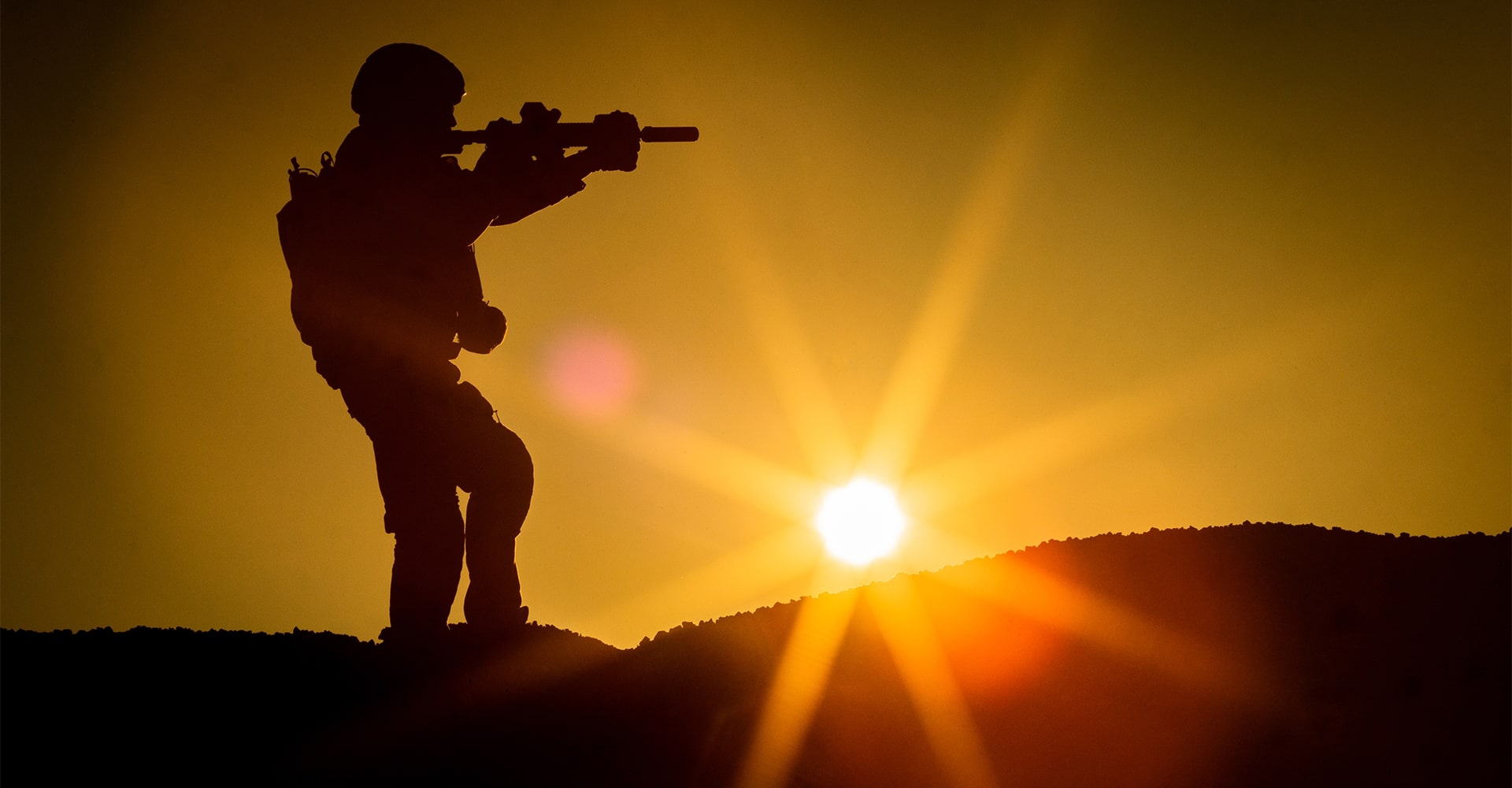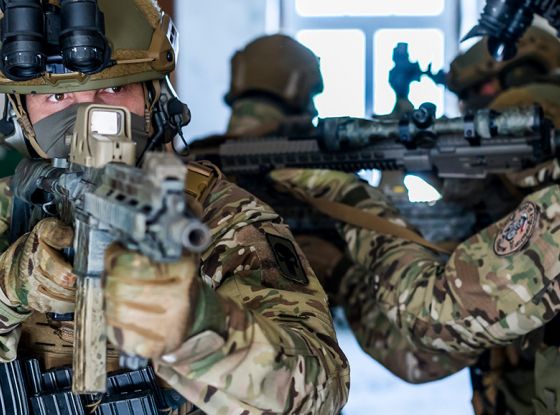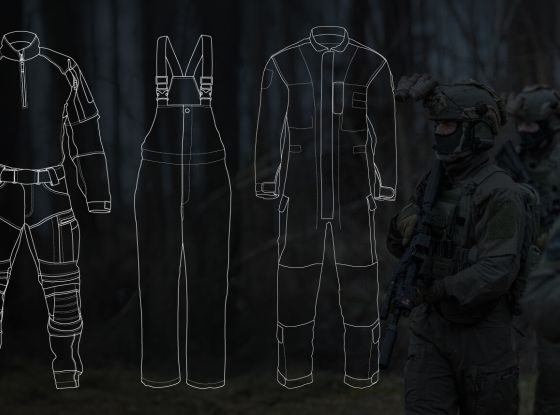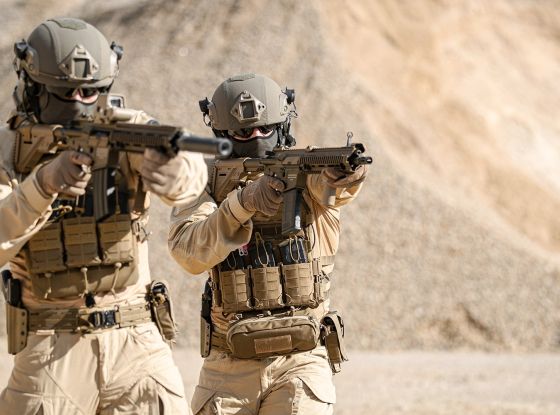Imagine stepping into the field as the sun pounds down with no mercy. The air feels thick, every breath heavy and hot. Sweat drips into your eyes, stinging, while your shirt clings like a wet rag. Your pulse climbs, not from exertion alone but from your body fighting to stay cool.
In this blog post:
This isn’t just discomfort—it’s a physiological battle. Heat chips away at strength, slows reaction times, and clouds judgment. Knowing how heat affects your body and having the right hot weather gear keeps you prepared when conditions turn extreme.
How the Body Gains and Stores Heat in Hot Environments
Your body continuously gains heat from multiple sources, which can overwhelm your cooling systems:
- Environmental heat: Direct exposure to sunlight can raise skin temperature by several degrees beyond air temperature. Additionally, ambient temperatures, especially when combined with high humidity, reduce the efficiency of heat loss by evaporation, forcing your body to work harder to cool down.
- Metabolic heat: Physical activity produces heat internally as a natural byproduct of muscle contractions. In hot environments, this added metabolic heat increases total body heat load and can push core temperature dangerously high if cooling mechanisms cannot keep pace.
- Clothing and gear: Tactical gear often adds insulation or limits airflow. Non-breathable or heavily layered clothing traps heat and sweat close to the skin, reducing evaporative cooling and increasing thermal strain.
When heat gain surpasses the body’s ability to dissipate it, core temperature rises, increasing risks of dehydration, heat-related illnesses, and impaired function.
Your Body’s Response to Heat: The Cooling Mechanisms in Action
The human body is a finely tuned system designed to maintain a stable core temperature near 37°C (98.6°F), critical for cellular function and overall health. When exposed to heat, your body initiates several interlinked processes to avoid overheating:
- Vasodilation: Blood vessels near the skin surface expand, allowing more warm blood to flow close to the surface. This facilitates heat transfer through radiation and convection, effectively dumping internal heat into the environment. This increased blood flow can cause your skin to flush and your heart rate to rise as the cardiovascular system works harder to maintain circulation.
- Sweating: Sweat glands produce moisture that evaporates from the skin surface, removing heat through latent heat loss. However, this process also depletes body water and electrolytes, which must be replenished to avoid dehydration and electrolyte imbalance.
- Increased heart rate and respiration: To support the elevated blood flow and compensate for fluid loss, the heart beats faster and breathing rate increases, which adds to the overall metabolic strain on your body.
These cooling mechanisms are effective but taxing—if hydration and energy supplies aren’t restored, physical performance and cognitive function rapidly decline.
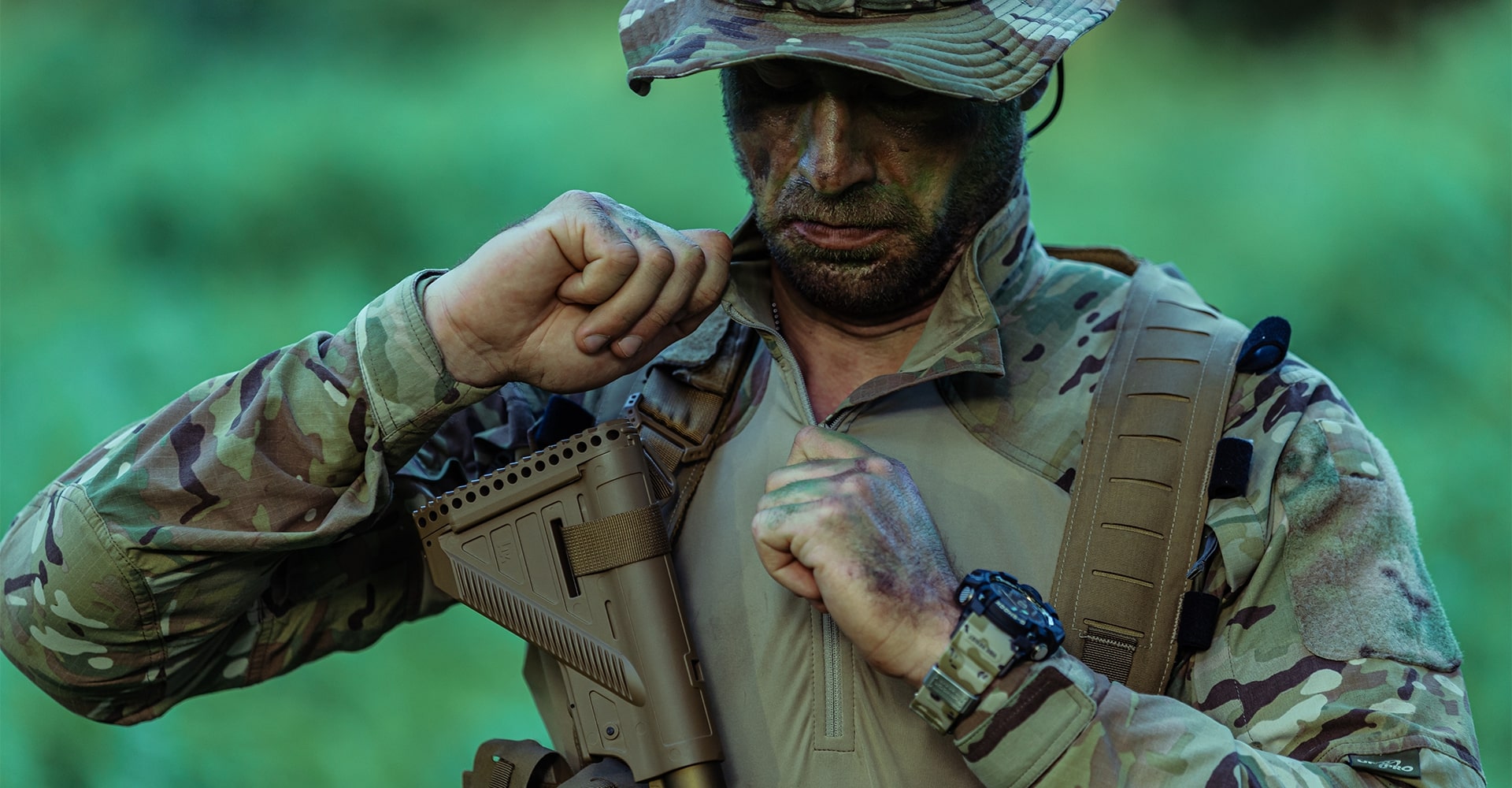
Heat Affects More Than Just the Body
Heat stress doesn’t just sap muscles—it affects the brain, too. Even mild overheating can significantly impact cognitive performance, a crucial factor for tactical operators:
- Slower reaction times: Heat impairs neural processing speed, meaning your ability to respond quickly to threats or changing conditions diminishes.
- Reduced decision-making accuracy: Elevated core temperature can disrupt executive functions, leading to poor judgments or risky choices.
- Mood and communication: Heat stress can increase irritability and reduce patience, negatively affecting team cohesion and communication—both vital for mission success.
SUBSCRIBE TO UNLOCK OUR EXCLUSIVE CONTENT
Enter your email and get timely updates and relevant intel on tactical topics directly to your inbox.
You are signing up to receive updates via e-mail from which you can opt out at any time. Visit our privacy policy for more info.
How to Stay Cool
Managing heat requires a holistic approach combining hydration, nutrition, scheduling, and gear:
- Hydrate proactively: Waiting until thirsty is too late. Continuous sweat loss depletes water and electrolytes; replenishing fluids and salts prevents dehydration, supports cardiovascular function, and reduces heat strain. Our heat illness guide covers best hydration practices.
- Fuel smartly: Choose light, balanced meals that minimize internal heat from digestion. Avoid heavy or fatty foods that increase metabolic heat production. Incorporate foods with high water content—like fruits and vegetables—to support natural hydration.
- Schedule work smart: When possible, avoid heavy exertion during peak heat hours (usually midday). Shift demanding tasks to cooler early mornings or late afternoons.
- Gear up properly: Use tactical clothing featuring lightweight, breathable, and moisture-wicking fabrics optimized for tropical and desert environments.
- Protect vulnerable areas: Use headgear to shield against solar radiation while allowing airflow, helping maintain heat balance.
By combining these strategies, you give your body the best chance to manage heat stress and maintain peak performance under extreme conditions.
Heat Acclimatization: Training Your Body to Adapt
The human body is remarkably adaptable, but acclimatizing to high heat isn’t instantaneous—it requires consistent and deliberate exposure over a period of days or weeks. This process, known as heat acclimatization, prompts a series of physiological adjustments that significantly improve your ability to tolerate heat stress and maintain performance.
Key changes during acclimatization include:
- Earlier onset of sweating: As your body adapts, it begins to produce sweat sooner during heat exposure. This increased sweat production boosts evaporative cooling, which is your primary means of losing heat. By sweating earlier and more profusely, your body can more efficiently regulate core temperature before dangerous heat buildup occurs.
- Reduced salt loss in sweat: Initially, sweat contains high concentrations of sodium and other electrolytes, which are critical for muscle function and hydration balance. Through acclimatization, sweat glands become more efficient, producing a larger volume of sweat that is more dilute. This adaptation helps preserve essential electrolytes, reducing risks such as muscle cramps, weakness, and fatigue that can arise from salt depletion.
- Improved cardiovascular efficiency: Heat acclimatization improves heart and blood vessel function. Your heart rate decreases at any given level of physical exertion, meaning your cardiovascular system works less strenuously to circulate blood and deliver oxygen. This reduces overall strain, conserves energy, and enhances endurance, allowing you to perform better for longer periods even in hot conditions.
How to Acclimatize Safely and Effectively
To fully benefit from heat acclimatization, a structured and safe approach is crucial:
- Start Early and Gradually: Begin preparation at least 7–14 days before operating in hot environments. Start with short (~30-minute) sessions of moderate physical activity in the heat, then gradually increase both duration and intensity.
- Daily Exposure: Aim for 1–2 hours of heat exposure each day, broken into manageable intervals if necessary. Consistency is key—skipping days can slow or reverse adaptation.
- Hydrate Continuously: Dehydration hinders acclimatization. Drink water and electrolyte-rich fluids before, during, and after activity.
- Monitor Your Body: Watch for early warning signs like dizziness, headache, or excessive fatigue. These indicate heat stress and require immediate rest and cooling.
- Use Proper Hot Weather Gear: Lightweight, breathable, moisture-wicking clothing supports the body’s cooling systems during acclimatization by allowing sweat to evaporate efficiently.
- Allow Recovery: Recovery is as important as heat exposure. Rest in cooler environments at night to allow the body to adapt without overstress.
With these guidelines, heat acclimatization helps improve physical output, mental clarity, and overall resilience in challenging environments. Pairing this adaptation process with high-performance hot weather gear ensures your body can manage thermal stress effectively from day one.
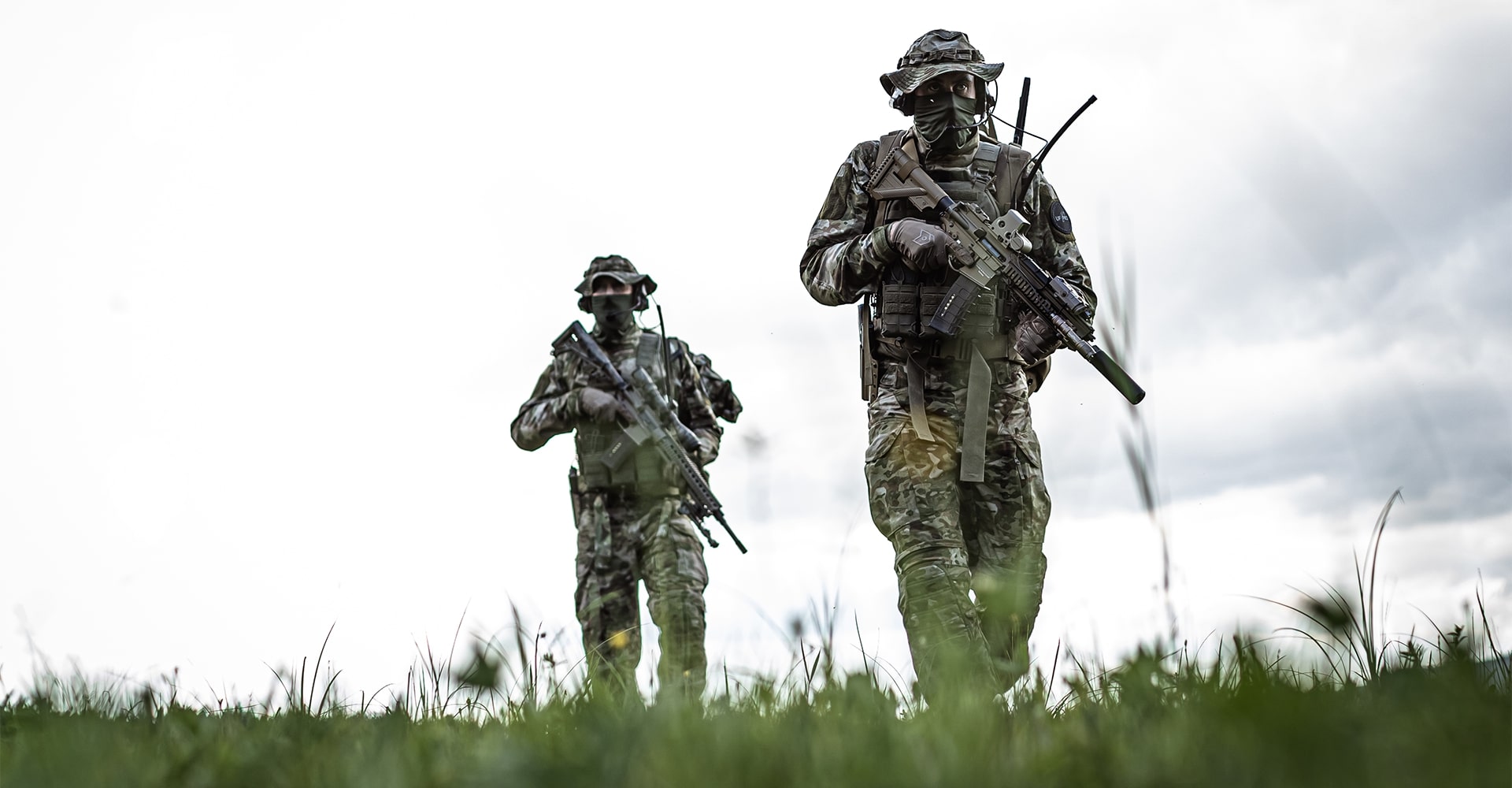
Why Hot Weather Gear Is Your Best Ally
Managing heat effectively demands more than just lightweight clothing—it requires smart engineering tailored to where and how heat impacts the body.
Key features that make top-tier hot weather gear indispensable:
- Breathability Where It Counts: Ventilation isn’t about covering everything with mesh, which wears out quickly. Instead, airflow is engineered precisely where your body generates the most heat—underarms, lower back, inner thighs—with mesh-lined vents, overlap covers, and stretch panels that let air circulate under plate carriers and packs without compromising protection.
- Quick-Drying, Sweat-Resistant Fabrics: Moisture control is mission-critical. High-performance synthetics wick sweat away from the skin, disperse it across the fabric surface, and dry rapidly to prevent chafing, heat stress, and infections—whether in dry or humid heat. Avoid cotton and untreated fabrics that trap moisture and slow you down.
- Durability Without the Heat Load: Heat accelerates wear in high-friction zones like knees, elbows, and seat. UF PRO strategically reinforces only these areas with abrasion-resistant materials, while the rest of the garment uses ultralight, stretchable fabric to reduce weight and heat retention—delivering both protection and comfort.
- Fit That Moves With You: Proper fit is critical to avoid trapping heat or restricting movement. Articulated knees and elbows, gusseted crotches and underarms, and tailored sleeve and leg designs ensure your gear moves with your body, enhancing airflow and reducing fatigue.
- Smart Layering for Hot Environments: Layering isn’t just for cold. A tactical layering system with sweat-wicking base layers, breathable mid-layers, and protective outer shells helps regulate core temperature, manage moisture, and maintain skin health during extended operations—especially in jungle or swamp conditions.
Explore UF PRO’s full lineup of hot weather tactical clothing designed to help you operate at your best in extreme heat. For a deep dive on selecting the right gear, check out our hot weather gear guide.
Conclusion
Heat stress is a formidable opponent that challenges every aspect of physical and mental performance. But with informed preparation, proper nutrition, and the right hot weather gear, its impact can be managed and mitigated. Investing in understanding your body’s response and equipping yourself accordingly ensures you stay mission-ready, no matter how intense the heat.

